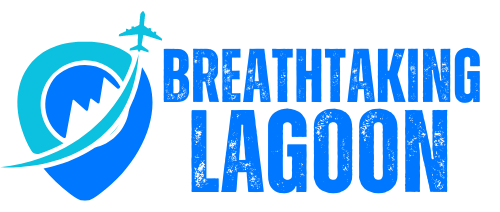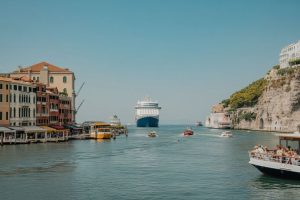Thursday, July 24, 2025
An unprecedented outbreak of the macroalgae, Sargassum, has become a persistent and increasingly severe problem for island countries. This goes especially for the Caribbean, the Gulf of Mexico, and parts of Central America. Sargassum has taken a toll on the economy, ecosystems, and public health. Regions that suffered under the seaweed’s spread were forced to find new means.
This season, the sargassum level has reached unheard-of records: an astonishing 25 million tonnes may be dispersed through the sea areas of the Caribbean, the Gulf of Mexico, and the Atlantic Ocean. The economic cost stemming from this year’s surge in sargassum could easily surpass any previous year, with extraction costs estimated at over USD 120 million annually for some places. For nations lying far south and dependent on tourism—such as the Dominican Republic, Mexico, and Barbados—this crisis threatens to erode their GDP.
Advertisement
Economic Impact on Caribbean Tourism
Advertisement
Tourism is the backbone of many Caribbean economies, contributing significantly to the GDP of numerous island nations. Countries like the Dominican Republic, where tourism accounts for nearly 19% of the GDP, and Mexico are particularly vulnerable to the disruptive effects of sargassum. The seaweed’s presence, especially during peak tourism seasons, leads to declines in hotel bookings, with many areas reporting drops of 30% to 40% during the peak sargassum period, typically between May and August.
The southern Mexican coast, specifically the state of Quintana Roo, is facing one of the most challenging seasons, with areas like Tulum, Playa del Carmen, Cozumel, and Mahahual severely affected. These tourist hotspots have seen a marked decline in visitors, directly influencing both local businesses and national economic growth. The regional economic losses during high season could reach a staggering $200 million, based on historical data, further exacerbating the financial strain caused by this invasive species.
Environmental and Public Health Concerns
Beyond its economic consequences, the sargassum bloom poses significant threats to the environment and public health. As the seaweed washes ashore, it decomposes, releasing a potent and unpleasant odor that can disrupt daily life in coastal communities. More concerning, however, are the toxic emissions produced during decomposition, which can cause respiratory problems for vulnerable individuals, particularly those living in affected areas. These public health risks have made it necessary for governments and environmental groups to address the problem promptly.
Marine ecosystems, too, are under threat. Sargassum, when left unchecked, can suffocate coral reefs, harm fish populations, and disrupt the balance of marine life. Key species, such as sea turtles and fish, rely on coral reefs and healthy marine environments to survive. As sargassum accumulates on beaches and in the oceans, the delicate ecosystems that sustain marine biodiversity are in peril.
Regional and Global Expansion of the Sargassum Problem
While the Caribbean nations are facing the brunt of this ecological and economic challenge, other regions are also struggling with the increasing prevalence of sargassum. Puerto Rico, Cuba, and Barbados are among the Caribbean nations that are confronting this daily battle. But the issue isn’t limited to the Caribbean alone. The Gulf of Mexico, a region heavily dependent on both tourism and fishing industries, is also witnessing an expansion of sargassum blooms, which affect the livelihood of local fishers and the overall economy of coastal areas.
The spread of sargassum has been linked to rising global temperatures, which have exacerbated the situation. Climate change has caused changes in ocean currents and nutrient levels, fostering conditions that promote the growth of this invasive algae. As a result, the scale of the problem is expected to worsen in the coming years unless concerted global efforts are made to mitigate its spread.
Innovative Solutions and Efforts to Combat the Crisis
In response to the growing sargassum crisis, Caribbean nations have begun exploring innovative ways to not only manage the surge of seaweed but also transform it into a valuable resource. A number of promising solutions have been proposed, focusing on utilizing sargassum in various industries, including agriculture, energy, and cosmetics.
For example, one startup, led by Dominican entrepreneurs, has developed an offshore system designed to collect sargassum before it reaches the shore and begins to decompose. This system, already operational in several countries, including Mexico, Antigua and Barbuda, and Puerto Rico, helps prevent the seaweed from causing environmental damage by removing it before it affects coastal ecosystems.
Sargassum’s potential as a resource has also spurred interest in its use for biomass energy production. This approach involves converting the algae into fuel, providing an alternative energy source while simultaneously addressing the growing waste problem. Additionally, the nutrient-rich seaweed has been explored for use as a natural fertilizer for agriculture. The nutrients in sargassum can be harnessed to improve soil quality, offering a sustainable solution to the agricultural needs of island nations.
Other potential uses for sargassum include extracting compounds for cosmetics and food products, which could help create an entirely new industry in the region. This has prompted the launch of initiatives like the Working Group on Sargassum Valorization, a collaboration between the Dominican Republic and the European Union aimed at developing value chains to process the seaweed efficiently.
Conclusion: Turning a Crisis into Opportunity
It’s undeniable that the appearance of this large lawn of brown algae is the biggest challenge facing the Caribbean right now. Sargassum’s impact on tourism, the economy, and the environment is inestimable quantitatively. But the efforts by Caribbean nations to innovate and make use of this crisis do offer some hope. If they turn sargassum into something of benefit and value, the whole Caribbean environmental nightmare can become an economic opportunity. Along with the ideas of sustainability and innovative solutions, continued collaboration is needed here. With these three pieces of the puzzle in place, Caribbean society can create an example for future generations to follow, where sargassum poses a manageable threat and its advantages are ploughed back into communities and economies.
Advertisement
Tags: antigua, barbados, caribbean, Cozumel, Cuba, Dominican Republic, EU, gulf of mexico, Mahahual, mexico, Playa del Carmen, puerto rico, Quintana Roo, Tulum
Advertisement
Tags: antigua, barbados, caribbean, Cozumel, Cuba, Dominican Republic, EU, gulf of mexico, Mahahual, mexico, Playa del Carmen, puerto rico, Quintana Roo, Tulum
I want to receive travel news and trade event update from Travel And Tour World. I have read Travel And Tour World’sPrivacy Notice.
Thursday, July 24, 2025
Thursday, July 24, 2025
Thursday, July 24, 2025
Thursday, July 24, 2025
Thursday, July 24, 2025
Wednesday, July 23, 2025
Thursday, July 24, 2025
Thursday, July 24, 2025




